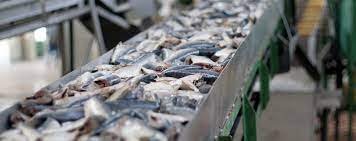Fish and Seafood Processor

Introduction: The global demand for fish and seafood has been steadily increasing due to their nutritional benefits and cultural significance. With this growing demand comes the need for efficient processing methods to ensure freshness, safety, and quality. Fish and seafood processors play a crucial role in meeting these demands by transforming raw catch into a variety of value-added products ready for consumption. This article explores the importance of fish and seafood processors, their role in enhancing food security, and the challenges they face in today’s dynamic market.
The Significance of Fish and Seafood Processing: Fish and seafood processing involves various techniques such as cleaning, filleting, freezing, canning, smoking, and packaging. These processes not only extend the shelf life of seafood but also enhance its taste, texture, and nutritional value. Moreover, processing allows for the creation of a diverse range of products tailored to different consumer preferences and culinary traditions.
One of the significant advantages of fish and seafood processing is its contribution to food security. Fish is a vital source of protein and essential nutrients for millions of people worldwide, especially in coastal regions and developing countries. By efficiently processing and distributing seafood products, processors help ensure a stable food supply, particularly in areas where access to fresh fish may be limited.
Furthermore, fish and seafood processing adds value to the industry and creates employment opportunities along the supply chain, from fishermen and processors to distributors and retailers. This not only supports local economies but also fosters economic development in coastal communities.
Challenges Faced by Fish and Seafood Processors: Despite its importance, the fish and seafood processing industry faces several challenges that impact its operations and sustainability. One of the primary concerns is the issue of overfishing and environmental degradation. Overfishing, coupled with habitat destruction and pollution, threatens fish stocks and marine ecosystems, making it increasingly difficult for processors to obtain a consistent supply of quality seafood.
Additionally, fish and seafood processing requires strict adherence to food safety and hygiene standards to prevent contamination and ensure consumer health. However, maintaining these standards can be challenging, especially in facilities with limited resources or inadequate infrastructure.
Furthermore, fluctuations in market demand, regulatory requirements, and trade barriers pose additional challenges for fish and seafood processors. Adapting to changing consumer preferences, complying with international standards, and navigating trade agreements require significant investments in technology, training, and infrastructure, which may not always be feasible for small-scale processors.
Innovations in Fish and Seafood Processing: To address these challenges and capitalize on emerging opportunities, fish and seafood processors are increasingly turning to innovation and technology. Advanced processing techniques such as high-pressure processing, vacuum packaging, and freezing technologies help maintain the quality and freshness of seafood products while extending their shelf life.
Moreover, sustainable practices such as responsible sourcing, aquaculture, and eco-friendly packaging are gaining traction among processors seeking to minimize their environmental footprint and meet consumer demand for ethically sourced seafood.
Furthermore, advancements in automation and robotics are revolutionizing fish processing plants, streamlining operations, reducing labor costs, and improving efficiency. From automated filleting machines to robotic packaging systems, these technologies are transforming the way seafood is processed and distributed, making the industry more competitive and sustainable.
Collaboration and Partnerships: Addressing the complex challenges facing the fish and seafood processing industry requires collaboration and partnerships among stakeholders across the supply chain. Governments, industry associations, research institutions, and non-profit organizations can work together to develop and implement sustainable practices, support innovation, and strengthen regulatory frameworks.
Moreover, fostering partnerships with fishing communities, local suppliers, and consumers can help processors build trust, enhance transparency, and promote social responsibility throughout the value chain. By working together towards common goals, stakeholders can ensure the long-term viability and resilience of the fish and seafood processing industry.

Conclusion: Fish and seafood processors play a vital role in meeting the growing demand for nutritious and sustainable food sources worldwide. Through their expertise in processing and value addition, processors contribute to food security, economic development, and environmental sustainability. However, they also face significant challenges such as overfishing, food safety concerns, and market volatility.
By embracing innovation, adopting sustainable practices, and fostering collaboration, fish and seafood processors can overcome these challenges and thrive in an increasingly competitive and dynamic market. Together with stakeholders across the supply chain, they can build a more resilient and responsible seafood industry that meets the needs of present and future generations.


